The Best Positions for Breastfeeding / Bodyfeeding
By Kimberleigh Weiss-Lewit, IBCLC
Ultimately the breastfeeding position or bodyfeeding position that works best for you and your baby is your ideal position! You may start with one or two positions and as your baby grows you may begin to find many ways to nurse. In any position, remember that your comfort and stability is as important as your baby’s.
While the terms positioning and latch are usually used independently, the two are completely linked. For a baby to latch well and deeply, they need to feel close contact with the lactating parent. In all positions, aim for your baby’s hips, chest and chin to be in a straight line, facing you and in close contact (often referred to as “tummy to tummy”, with your baby’s belly touching your belly). Lead with your baby’s chin, so that your baby contacts the breast or chest with the chin first. Be sure their head can tip back to bring the nipple comfortably pointing to the roof of their mouth (sometimes this is called the “safe zone” for your nipple!). Most importantly, snuggle your baby in nice and close (your bodies should be in direct contact with no space between you!)—sometimes just bringing your little one in closer can make a world of difference for you both.
laid back/leaned back

The laid back position is where the lactating parent is leaning back anywhere from fully reclined to propped up slightly either in bed or on the couch. This is a great first position for your newborn and mirrors how your baby is laid down on your belly or chest right after birth. Your baby’s instincts are engaged when their full body is in contact with yours. Your leaned or laid back angle allows gravity to bring your baby very close. Try leaning back and turning your baby completely toward you and see if that helps your baby to relax, open wide and latch deep. This position is often more supportive and comfortable for you—especially while healing in early postpartum.
cross-cradle
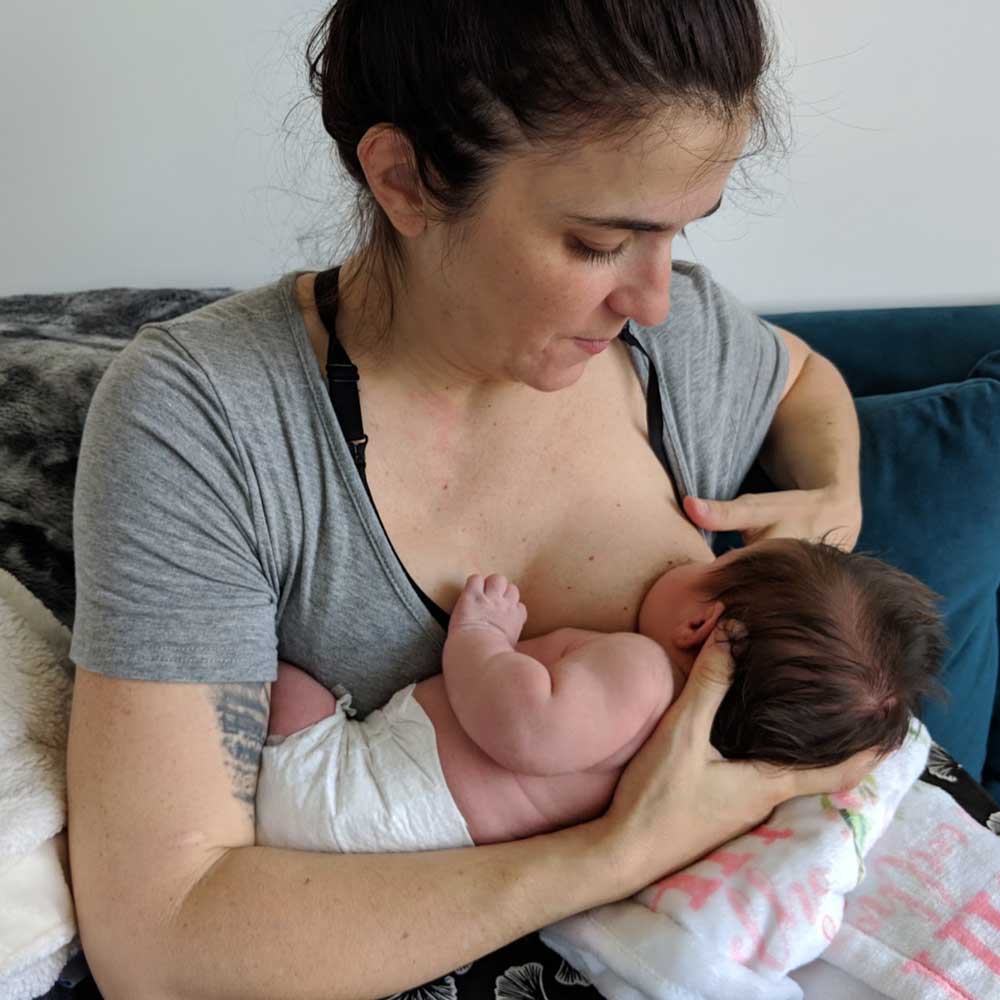
Cross-cradle is another great position for your newborn. This position can be combined with a laid or leaned back approach but gives you more control while guiding your baby to latch. Bring your arm along your baby’s back, tuck their bottom into the bend of your elbow and place your hand on your baby’s upper back. This position can help stabilize your baby and keep them directly facing you. Be mindful not to hold or press on your baby’s head which can lead to your little one pulling away from the latch. Your support on the upper back also allows you to keep their chest close to you and gives space for their neck to extend, their head to tip back, and their chin to be deep into your breast or chest.
cradle
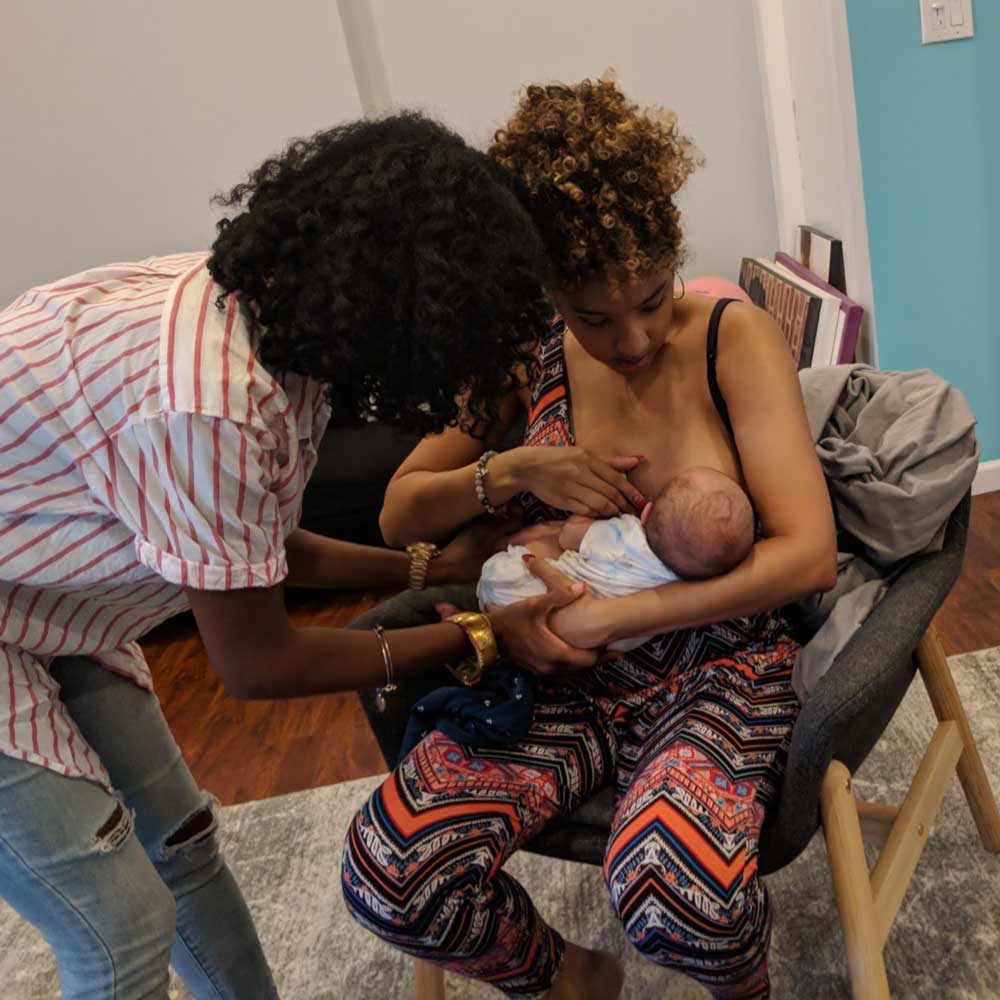
Cradle is probably the most recognizable nursing position and how many nursing parents position their babies, especially as their baby gets a little older. Keeping your baby close to you, wrap your arm around the baby with the baby’s head “cradled” in the crook of your arm. If you have larger breasts, it can be helpful to use the arm closest to that breast to hug in both your breast and baby. A slight lean back can be helpful in this position.
football or clutch
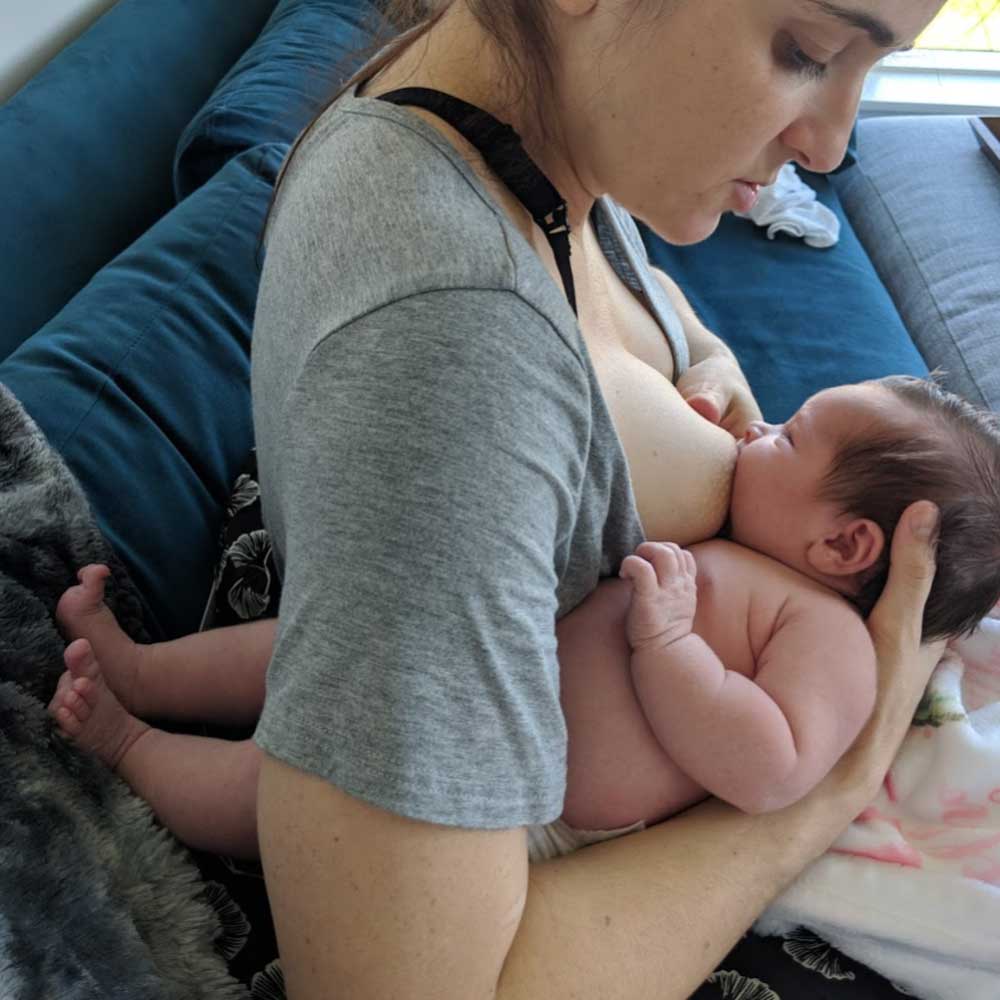
This position may be great for you if you have larger breasts, are a parent of twins, or gave birth by c-section. In this position, your baby will be supported by the same arm as your breast, with the baby tucked under your arm. This position often allows a deeper latch for those with larger breasts, does not put pressure on a cesarean incision and allows twins to be nursed more easily at the same time. If you have a longer baby you might find you need to place some pillows or support behind you to create space on the side of your body for your little one to fit! In this position, it is still important that your baby comes to the breast or chest chin first and with some extension in their neck to allow your nipple to be well positioned toward the roof of your baby’s mouth. Some parents prefer this position as it can be easier to “see” how the baby is latching than in other positions.
side-lying
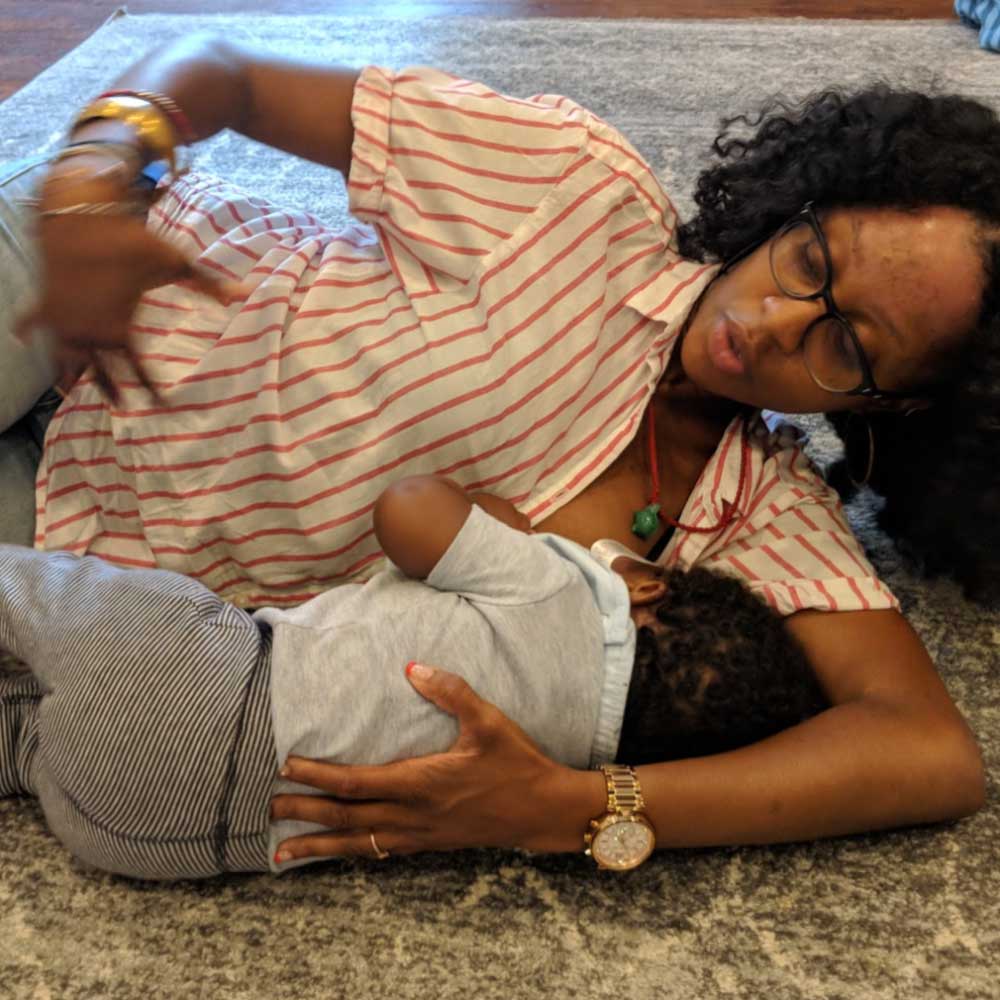
Side-lying is an amazing position for new parents because it allows you some much needed rest! Many nursing parents use this position for nighttime feeds but it can also be great during the day to allow you to relax and recharge. Side-lying can also be ideal for some babies that are craving the extra stability that this position provides. You and your baby will face each other completely with baby slightly below your areola and nipple so your baby can reach up for a chin-in-first deep latch. Adding a pillow behind your back and a small rolled up receiving blanket behind your baby's back can help keep the two of you facing each other and feels so comforting!
koala
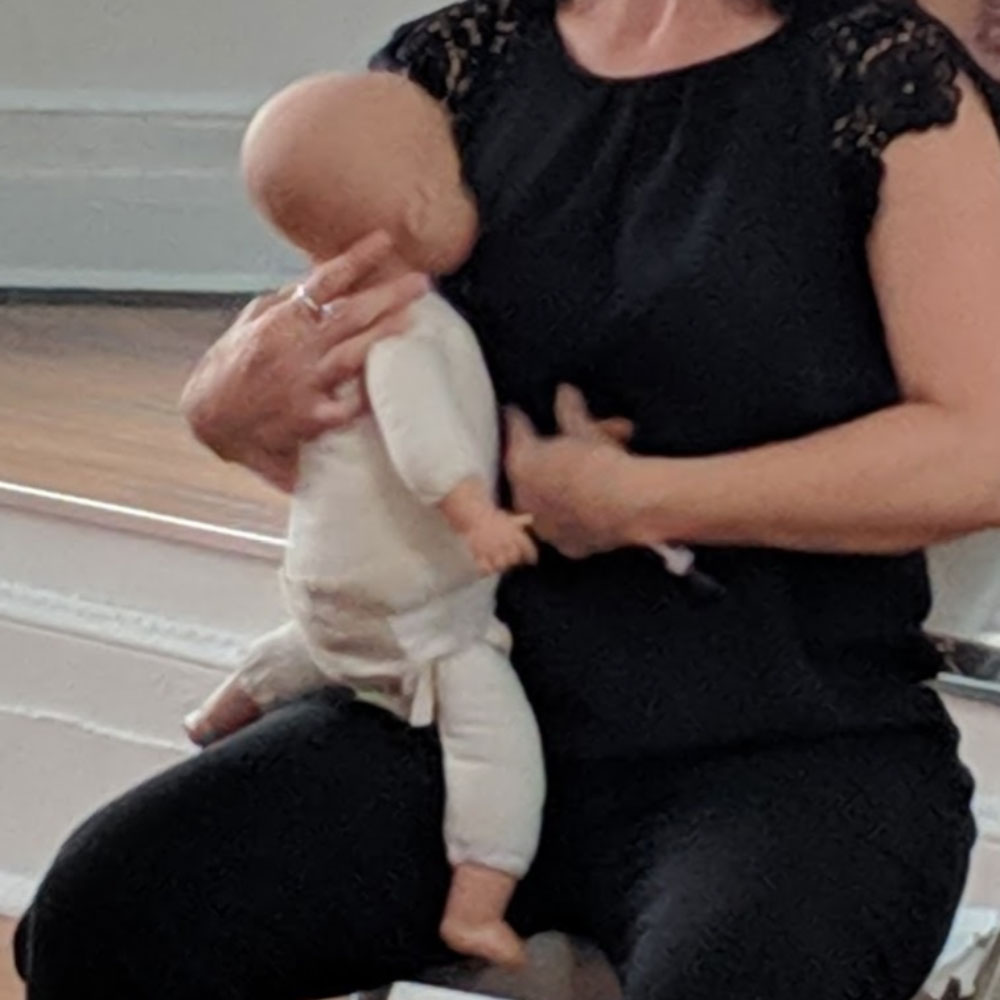
Koala is an excellent position when you and your baby are having a challenging time maintaining a deep latch. It also can be very helpful for a baby struggling with reflux when upright feeding is more comfortable. In Koala, your baby rests or sits on your thigh and approaches the breast or chest from below with an extended head back and chin first position taking in a large “mouthful” of breast/chest tissue.
carrier holds
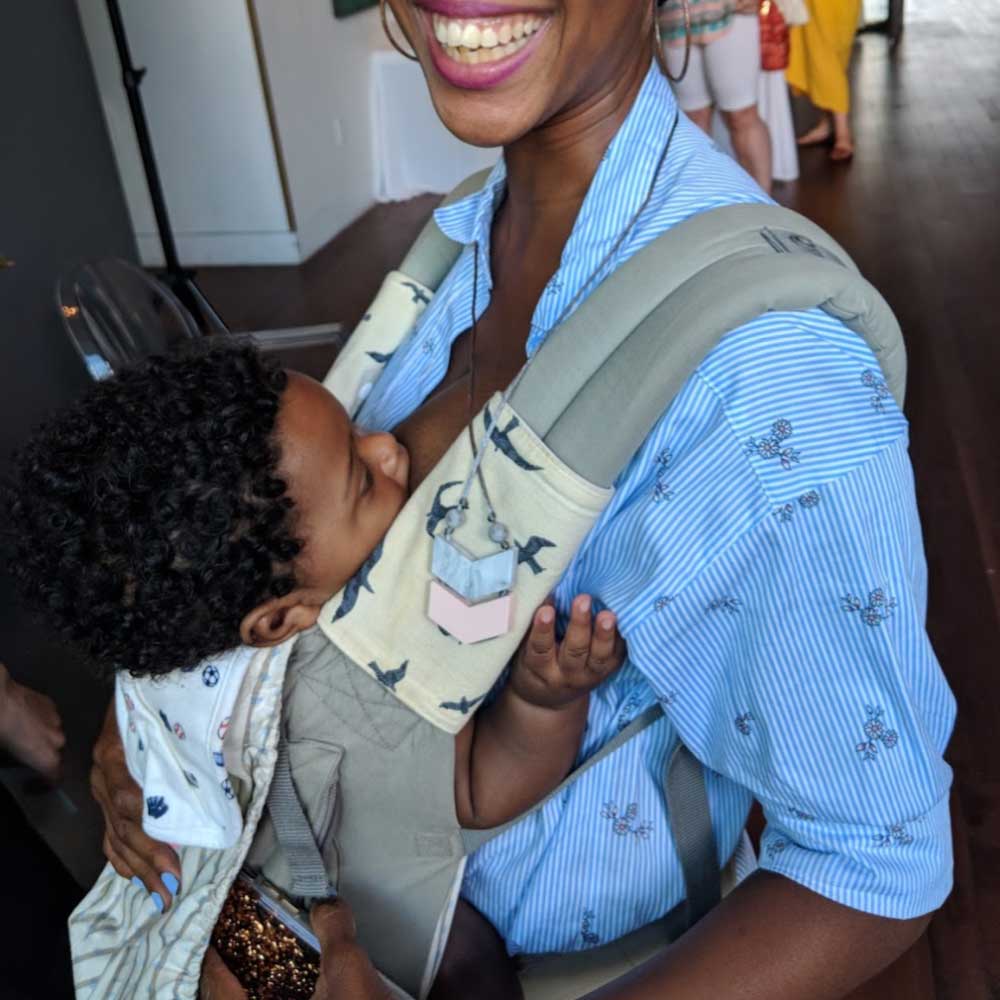
While nursing in a carrier encompasses many different positional options there are several things to keep in mind that can help with this endeavor. Nursing in a sling, wrap or structured carrier can give you more freedom and your baby may calm more readily with the movement and closeness of babywearing. In any carrier, be sure your baby is secure and whether nursing or not check to make sure baby’s chin isn’t tucked to their chest. It can be helpful to line up the back of the carrier to your little one’s upper back so the carrier provides similar support that a hand would in a cross-cradle position. Your baby should be able to extend their neck and latch on chin-first. If it feels like your baby is too high on your body (and you find you need to hold your breast or chest), lower them on the side you are nursing on and then re-tighten to bring them close. You may find that your baby squirms when first placed in a carrier but settles in as soon as you start walking or moving. Carrier nursing can be used across the nursing relationship—-the carrier options and holds will grow with your baby!
How to use a nursing pillow If you are using a nursing pillow you may find your baby is too far away from your body or at the wrong height. Make the sure the pillow is working for you. Ideally any pillows you use when nursing support you so you can best support your baby (in other words, don’t make the position work for the pillow; make the pillows work for you!). You may find that a nursing pillow serves you well or you may find you are most comfortable using other pillows, rolled up baby blankets and burp cloths to allow your arms and shoulders to relax. Don’t forget about your lower back—a pillow there can make a lean or laid back position much more calming!
There is no one position that works perfectly for all nursing couplets and for all stages. Working with a lactation consultant can be incredibly helpful for families to find the best positions for breastfeeding/bodyfeeding—the lactation consultant can suggest adjustments and shifts in the positioning that can take both the you and baby to a place of stability and comfortable nursing. You and your baby are like a puzzle, nursing well is finding how you fit together just right!